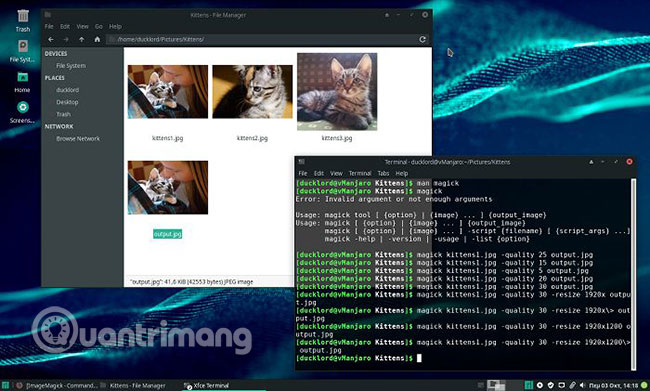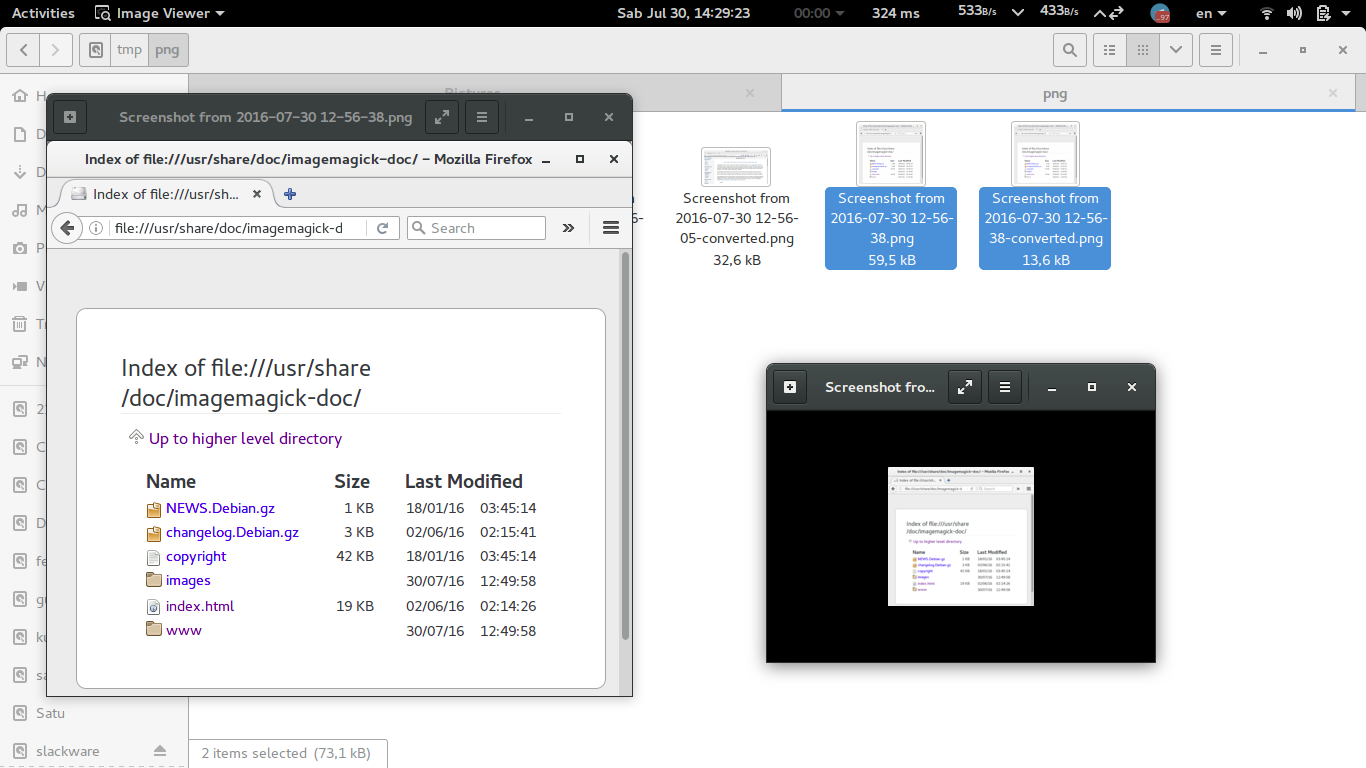

- IMAGEMAGICK RESIZE IMAGE HOW TO
- IMAGEMAGICK RESIZE IMAGE INSTALL
- IMAGEMAGICK RESIZE IMAGE DOWNLOAD
- IMAGEMAGICK RESIZE IMAGE WINDOWS
We could use all sorts of resampling filters and interpolation methods to figure out those 48 extra pixels. How do we resample a 4 × 4 pixel square to an 8 × 8 pixel grid? ( View large version) When you’re resampling, the algorithm for determining how the interpolation works is called a resampling filter. Those pixels will need some color value, and the process of determining that color value is called interpolation. To resample our 4 × 4 blue square to 8 × 8 pixels, we need to add 48 extra pixels somewhere. What we’re doing is taking the same image and applying it to a new pixel grid this is called resampling and is usually what we mean when we talk about resizing images. Consider an image of a blue 4 × 4 pixel square that we want to double in size to 8 × 8 pixels. making images larger) can be a little easier to visualize, so let’s start with that. In other words, we need to figure out the best way to add or remove pixels without changing what the image looks like.Īlthough not as common a use case, image upsampling (i.e. The challenge is in figuring out the best way to store the original image’s content in this different number of pixels. If the image is being enlarged, the output will have more pixels than the input if the image is being shrunk, the output will have fewer pixels than the input. The best way to solve the problem is to understand why it’s happening, and that means understanding the basics of how image resizing works.īy definition, when a computer resizes an image, the number of pixels in that image will change.
IMAGEMAGICK RESIZE IMAGE HOW TO
These big files completely negate the performance gains you’d expect to get from responsive images and, in fact, can make things worse for your users than if you’d simply loaded the huge unshrunk assets.īelow, I’ll describe why this problem exists and show you how to change ImageMagick’s default settings to solve this problem and get small, great-looking images. Unfortunately, with the default settings, the resized files it outputs are often really big - sometimes bigger than the inputted image, even though the output has fewer pixels. ImageMagick provides a fast, simple way to automate image resizing.
IMAGEMAGICK RESIZE IMAGE DOWNLOAD
Otherwise, look for it in your favorite package manager, or download it directly from the ImageMagick website.
IMAGEMAGICK RESIZE IMAGE INSTALL
If you use Homebrew on a Mac, you can install it like this: brew install imagemagick
IMAGEMAGICK RESIZE IMAGE WINDOWS
It’s also available on desktop systems (Mac, Windows and Linux). It is widely supported by content management systems (CMS) such as WordPress and Drupal, integrated with task runners such as Grunt, and used on its own to automate image editing - including resizing. ImageMagick has been around for almost 25 years and is a full-fledged command-line image editor. A bunch of tools out there do this, including GD and GraphicsMagick, but ImageMagick strikes a good balance between power and availability in hosting environments. This is where automated image resizing comes in handy.

But what about a large website with a lot of images? An online store, for example, might have hundreds or thousands of image assets, and having to create different sizes of each of these is an enormous task. Responsive images to the rescue! Right? Well, yes, but first we have to generate our responsive image assets, and we have to make sure those assets look good and have a small enough footprint to improve the website’s performance.įor a very small website, saving a few different sizes of each image directly in our image editor is trivial - Photoshop even provides a handy “Save for Web” option that keeps file sizes low. (Image: HTTP Archive) ( View large version) The average web page is 2,099 KB, 1,310 KB of which comes from images. Improving web performance and giving a better experience to our users is our job as developers and designers. Even on a fast connection, a 2 MB website can wreak havoc on your users’ data plans and cost them real money. At the same time, millions of people are accessing the Internet on 3G-or-worse connections that make a 2 MB website a horror show to use. The average web page is about 2 MB in size, and about two thirds of that weight is from images.


 0 kommentar(er)
0 kommentar(er)
